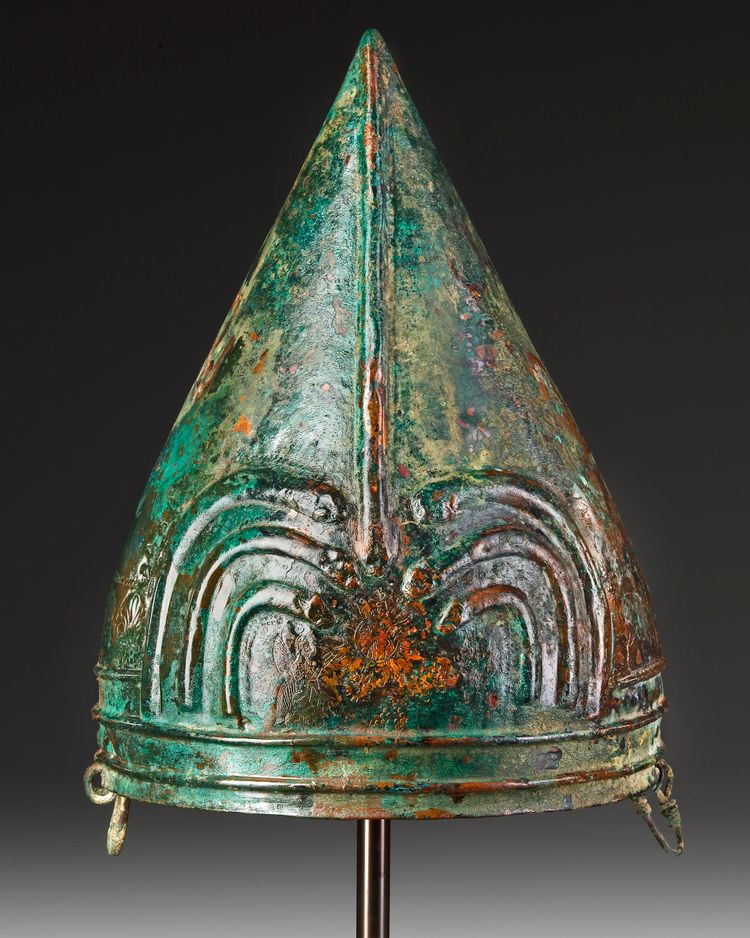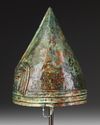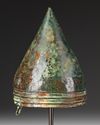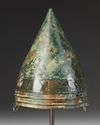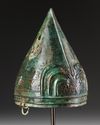AN URARTIAN BRONZE HELMET, CIRCA 9TH-7TH CENTURY B.C.
An Urartian helmet raised from a single bronze sheet of conical form with two horizontal raised ribs around the bottom edge, at the front six long necked 'beasts', three on each side, face each other. Their terminals end with rams and snakes and bull terminals. The central vertical rib from the helmet's apex comes down to a lion head terminal. Below this a scene is incised below with the Urartu god (Haldi?) before a sun disc connected with rays to many celestial objects, flanked by two winged adherants, with hands raised in attitudes of worship and all surrounded by incised images of running Ibex with palmettes. accompanied by custom-made display stand.
The Urartian craftsmen were especially famous for their metal working skills. Among them the bronze helmets, quivers, and shields are most renowned for bringing together the hammering, repoussé, and engraving techniques.
31 cm. height excluding stand.
741 grams.
CONDITION
Very good condition.
PROVENANCE
The Rosendal's family collection since 1956, thence by descent.
LITERATURE
Cf. Barnett, R.D., Watson, W., ‘Russian Excavations in Armenia’ in Iraq, vol.14, no.2, fig.15, and pls.XXXII,2, XXXIII,2; Borchardt, J., Homerische Helme: Helmenformen der Ágāis in ihren Beziehungen zu orientalischen und europäischen Helmen in der Bronze-und frühen Eisenzeit, Mainz, 1972, pp.103ff., fig.9, p.107, 10-12, p.108; pl.34,4; Born, H., Seidl, U., Schutzwaffen aus Assyrien und Urartu, Sammlung Axel Guttmann IV, Mainz, 1995, pp.90, 94, 107ff., pp.174-175, pls.I, IX, X-XI (AG 168, 385); Dezső, T., Oriental Influence in the Aegean and Eastern Mediterranean, Helmet traditions in the 9th-7th Centuries B.C.: the Patterns of Orientalisation (British Archaeological Reports, S691), Oxford, 1998; Christie’s, The art of the warfare, the Axel Guttmann collection, Part II, Wednesday 28 April 2004, London, 2004, pp.38-39 no.39; Gorelik, M.,Weapons of Ancient East, IV millennium BC-IV century BC, Saint Petersburg (2003) in Russian, pl.LXI nn.88-89-90; Castelluccia, M., ‘Urartian Metalwork in Caucasian Graves’ in Makalatia, S., Studies in Caucasian Archaeology, Tblisi, 2014, fig.3.
